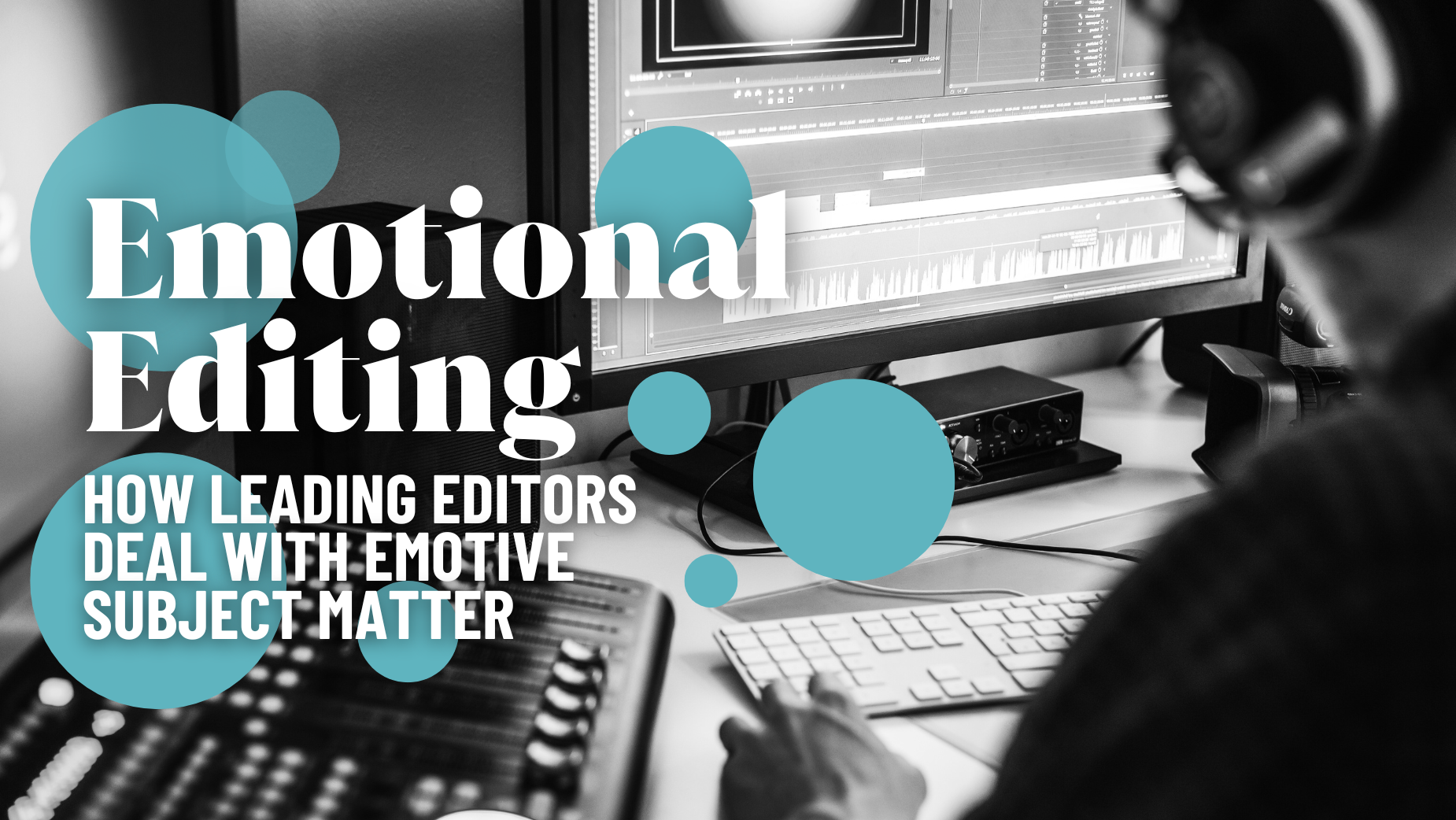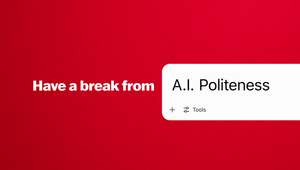
“The Responsibility of Making Someone Cry”: Editors Spill Their Secrets

Skillful editors can play our emotions like a violin – from tender romance, to tear-jerking tragedies and can’t-look-away PSAs. Masters of the behind-the-scenes process, they weave thread after thread until the storyline is complete, and better than ever.
There are some crucial moments that are not to be overlooked, and an editor’s trained eye is the only one that can catch it before it’s even happened. Perhaps a heartbeat of silence, a split second of shock, or a long pause that seems unworkable. It’s up to those who will push the project to its final form to chop up the silence, or let it linger.
Some are led by emotion, others by the script, and another contingent by the music, but no matter what the guiding light is, it remains true that the editor is the master puppeteer, without whom the soul of any project would be lost. So, how do they do it? How do they plant it where it was wholly unexpected? Read on to find out.
Kenji Yamauchi
Editor, Lost Planet
There’s a lot of responsibility in trying to make someone cry. Such a personal emotion needs to be earned and, in a way, respected by the person trying to evoke it. Leveraging someone’s deep emotional state is not simple, so here are a few things I believe are essential when crafting a piece that can achieve that goal.
It’s very important to be honest with the story you’re telling. Hardships come in many shapes and sizes, so make sure you’re not holding back too much, making it difficult for anyone to relate, nor stretching it to the point where the fabric of the emotion breaks apart, making it dull. Look at it for what it is. Don’t complicate what’s simple, and don’t simplify what’s complex. Again, be honest.
It goes without saying, but being respectful of the subject matter is integral to carving the emotion out of it. The more you can build this solid foundation by studying it, reading about it, or simply talking to someone else about it, the better it will become in a very practical way.
Ultimately, crafting an emotional piece can be summarised in one word: empathy. This is why people with backgrounds similar to the subject matter are often hired for specific projects. Putting yourself in someone else’s shoes to understand their struggles or moments of pure joy, their rationale – or lack thereof – is probably the toughest part. However, once achieved, your canvas will be wide open. Paint with care; everyone deserves that.
JJ Lask
Editor, PS260
My approach to emotive subject matter is finding ‘the moment of truth’ in the footage. If you didn’t freeze and gasp for air, you didn’t find the moment. You have to search for it. The script notes will not tell you where it is. I search for the little moments inside; the moments that are devastatingly true, that rock you to your core.
I then take that moment and exploit the hell out of it! I craft and expand it until that moment of truth becomes the entire piece. I add my own emotions and sensitivity to the footage. In essence, I add my style. Together, the film takes on a new life with a new heartbeat.
For example, in the editing process of ‘World’s Toughest Job’ for American Greetings – a film that makes millions cry every Mother’s Day – half the battle was convincing the clients to abandon their predetermined script and let the film take on its own emotional trajectory.
In my edit room, I do not let ‘advertising logic’ dictate. I create a film to be watched instead of talked about. By prioritising emotional truth, film can be the most powerful emotional experience of any medium if you find the ‘moments of truth’.
Andrew Litten
Editor, House Post
When it comes to emotional storytelling, my way in is always to find relatability or empathy. It could be through a character that reminds me of someone I know in real life, an aspect of the craft that reminds me of an emotional film, or a piece of myself that I find in how the story needs to be told. Once I find that source of feeling, it’s my anchor, and I use it to drive my choices and conversations with the director and key players.
From there, it’s about making sure the editing is invisible, making way for the emotional context of the film and its characters to take centre stage. It’s a relentless pursuit that sometimes bubbles up to the surface on its own, while other projects it really takes time and problem solving to figure it out. The balance of craft versus story is an ever-changing challenge with emotional storytelling, but I find it’s always best to discover how to get out of the way, and let it breathe on its own.
Jim Rubino
Editor, BANDIT
Editors have a lot of control over the pace and speed of the edit when storytelling, which cues different emotions in tandem with music and sound. Lingering on a reaction or a moment longer – letting the music carry you out from one scene to the beginning of the next – can have an impact on the viewer. You can feel this particularly if it's a poignant moment, or if you need to jump-start the energy of the next scene. This can be used in commercials or longer formats.
With ads, you are usually using one music track. Sometimes starting the track later, or dropping the music entirely, can highlight the delivery of an emotional moment. It is fun just to try things, whether it’s cutting to high speed at a critical juncture or cutting something a little more frenetic to put the viewer on edge. These are some of the editing decisions I enjoy making and it makes already dramatic content even more intense.
Aaron Porzel
Creative director, editorial, PXP
My strongest tool for pulling emotion out of a scene is the ‘everything in between’ – the pause between the voiceover reads, the timing on a deadpan reaction shot, or the perfect moment to hold on a bit longer before the music kicks back in. At PXP, we understand that these subtleties are the heartbeat of emotionally resonant storytelling, and they are central to our strategy of crafting content that truly connects with audiences.
In the fast-paced world of advertising, it’s a special thing when those moments resonate, particularly in short-form storytelling. I like to identify the ‘turn’ or realisation moment and work my way out from there. The key is determining how much information needs to be conveyed before that pivotal moment and how much needs to follow before reaching the end – usually marked by the branded end card and a non-negotiable runtime.
Once the foundation is laid with that key moment in place, it’s all about finding the ‘everything in between’ to maximise its emotional impact. This process is at the core of PXP’s editorial strategy, where every cut is an opportunity to evoke powerful emotions that linger with the viewer long after the ad has ended. We are hyper focused on this idea and spend our days asking ourselves the same basic question over and over again: ‘Does this make me feel something?’. And if it doesn't... We keep going.
I love this part of the job. When I do find that perfect combination, it’s still the best feeling in the world – especially if it makes it through to the final cut. I liken it to that scene in ‘Ratatouille’ where shapes and colours dance around your senses when everything clicks together just right. It’s a kind of synesthesia, perhaps? Whatever it is, I’m constantly chasing that feeling with every edit, knowing that it’s what transforms good content into something truly unforgettable.
Laura Mahmoud
Senior motion designer, Cheil MEA
Editing is an art form that involves more than just assembling scenes, it’s about shaping the viewer’s emotional journey; it is a sophisticated craft that requires a deep understanding of both technical skills and human psychology.
The goal is to understand the target audience and seamlessly integrate with the viewer’s experience,making it feel like it’s an extension of their own consciousness.
As an animator, I find editing to be a fascinating extension of storytelling that aligns beautifully with our own craft. Like animators, editors use timing and pacing to create specific emotional responses; they adjust the rhythm of cuts and transitions, as much as we meticulously time animations to create tension, sorrow, or joy.
Editors know exactly how to work with emotions, they choose when to cut a scene or how to hold a shot to transmit the character’s feeling to you. For example, a close-up that lingers on a character’s face can make their emotions hit harder and deeper, while quick cuts can ramp up the excitement in an action scene; every decision made is designed to guide us through the story’s emotional journey.
In my opinion, the most important step of editing is choosing the music and sound effects. Music plays a crucial role in the process of storytelling, it amplifies the emotional depth of each scene, adding layers of feeling that visuals alone can’t always convey. A dark and suspenseful tune can heighten the tension and make you feel unsettled, while a whimsical and playful tune might enhance the joyful and light-hearted moments.
Colour grading is another powerful tool. By adjusting the colour palette of a film, editors can influence the mood dramatically. Warm tones create feelings of nostalgia and comfort, while cooler hues can create senses of melancholy, sadness, or detachment.
These visual adjustments help reinforce the emotional tone, connecting us to the deeper layers of a story. While working behind the scenes, editors have a crucial role in storytelling, they help to make sure the emotions in the story are clear and powerful; and without their experiences’ additions, a story might not hit as hard or feel as real.
Editors are the last piece of the puzzle that make us feel integrated with the scene.
Jim Helton
Editor, Final Cut
There is a tyranny to sync sound that I try to escape. I start by cutting the picture without music and, whenever possible, without sound. It keeps me honest, so the picture makes sense and tells the story. That clarity allows the sound design or music to step in and amplify the feeling of the piece without having to do any other work. Sound design makes something feel real or grounded, but it can also be emotional, and I like to give it space to operate in that realm. Music can often take over, making the work feel one-dimensional. But a strong visual story brings balance.
If it’s a dialogue scene, it must work without help first. From a performance standpoint, I start with moments that I believe. Then I share with the director and we begin to craft something. That moment of truth, that thing I believed, might even get cut, or get cut and then return. Regardless, it creates a creative dialogue between the work, the director, and myself. I stay open, connect with the work, and pay close attention when I share the work with an audience. You feel it when it connects with others. I don’t think too much about making it overly emotional. If I get the ‘feels’, I trust that.
Ben Jordan
Editor, Work Editorial
I love editing stories that resonate on an emotional level with the audience. The art of pacing is something I consider crucial when finding that visual language. Knowing exactly when to hold on a shot or a performance can transform a moment from something fleeting into something so powerful or emotional. Finding that essential take is key to the process. Sometimes that first take from an actor is all you need. Don’t always be swayed by the shooting politics and emotions that happen on a film set; having an alternative view away from those feelings can make your decision on what is best for the edit more unfiltered.
Music and sound design play pivotal roles in my work—whether it’s music that scores a scene’s emotion or the strategic use of silence to let a moment breathe. All these ingredients come together when I'm assembling my edit. There’s a fine balance between enhancing the emotional impact and maintaining the story’s authenticity and rawness. My ultimate aim is to always ensure that the emotions portrayed on screen feel real and not forced.
Brendan DeLoach
Editor, Carousel
As editors, we assume the role of professional observers. Our skill in observation greatly enhances our ability to manipulate and refine the material at hand. I think editing requires a deep intuition to discern the motivations behind what people choose to express or withhold in their performances on camera. Regardless of the genre, it’s a performance. Our goal is to evoke genuine emotion, and in the realm of emotionally driven work, authenticity is paramount. Less is more. My background in playwriting has honed my ear for distinguishing between authentic dialogue and contrived speech, but visually, the true essence of a character’s feelings often emerges in moments of silence and stillness.
Elizabeth M. Stewart
Editor, Camp Lucky
For me, all editing is emotional editing. Whether I want the viewer to cry, laugh, reflect or be inspired, my goal is the same: to make them feel something. That’s why I became passionate about editing to begin with. The power that fabricated visuals and sounds combined in the right order can elicit very real emotional responses. The most important part of my process is my initial viewing of the takes – finding those moments that resonate as authentic between ‘action’ and ‘cut’. That fresh eyes moment is when I’ll have my most genuine response to what I’m seeing. Anything that makes me feel what I’m looking for, I pull it.
Next is the challenge of deciding how to present these moments. Sometimes the pacing needs to be quick to convey humour or anxiety properly. Other times, if you don’t hold on the moment long enough, the viewer doesn’t have time for the impact of the scene to hit. And often with commercial editing, all these decisions have to fit within the constraints of 60 or 30, or even 15 seconds. When time is precious, and timing is everything, I must explore my own feelings and emotional response to what I’m making to know when it’s right.
Rasmus Nyholm Schmidt
Editor, Cut+Run
Imagine you’re at a dinner party with a bunch of people you don’t know. A guest starts talking about his personal life so loud that everyone hears every detail. But no one is really listening.
‘I have my own problems’, you think, and look around. Then two seats down, another guest is talking about losing his compass in life after his wife left. But he’s almost whispering, he doesn’t need anyone to listen, he’s just open hearted, confused and honest.
Suddenly every inch of your attention and empathy is focused on his story. You feel with him.
When I create emotional films, I aim to be the second dinner guest. My primary object is to engage the audience. If they invest their own feelings - their own sorrow, love, fear or excitement - the emotional impact of the film will be much bigger and truthful.
To create that connection, I look for the right emotional question. It’s not an intellectual curiosity I’m trying to evoke. It's emotional. Something subtle but clear, that makes the audience turn their heads and open their hearts. Something honest enough to make them feel recognized in our common humanity and vulnerability.
Kauai
Editor, Leap Year
Emotion in editing is tricky – how do you make it feel real without feeling forced? For me, it's about finding unscripted moments. The unplanned gems between takes – the subtle shifts in a character’s gaze or the tremor in someone’s voice – bring authenticity and depth to a film.
In my creative process, focusing on audio first creates a strong foundation for the visual edits, making sound design essential for hitting those emotional notes. The right sound can elevate a scene, adding depth and nuance that visuals alone can’t achieve. I love turning off the image and listening solely to the audio to grasp rhythm and pacing, ensuring it feels natural and musical.
Pacing is crucial and adjusting the rhythm can heighten tension or offer relief. Holding onto a character’s hesitant pause can create a deeper connection, while rapid cuts can convey chaos and urgency. Often, the most powerful emotional beats come from what's left unsaid or unseen. Letting a moment of silence linger can speak volumes, trusting negative space to do some emotional heavy lifting.
After the initial rough cut, I like to experiment and ‘mess things up’ to uncover profound or unexpected moments. This creative exploration often reveals genuine emotions that might be missed in a more rigid process.
Documentaries are often expected to look and feel a certain way to seem authentic. However, adding creative flair can convey deeper truths than the traditional fly-on-the-wall style. Embracing this manipulation can reveal something more genuine and touching. Making emotion feel real in editing is a blend of technique, instinct, and trial and error. Each project is unique, but discovering those magical moments makes the process truly gratifying.















